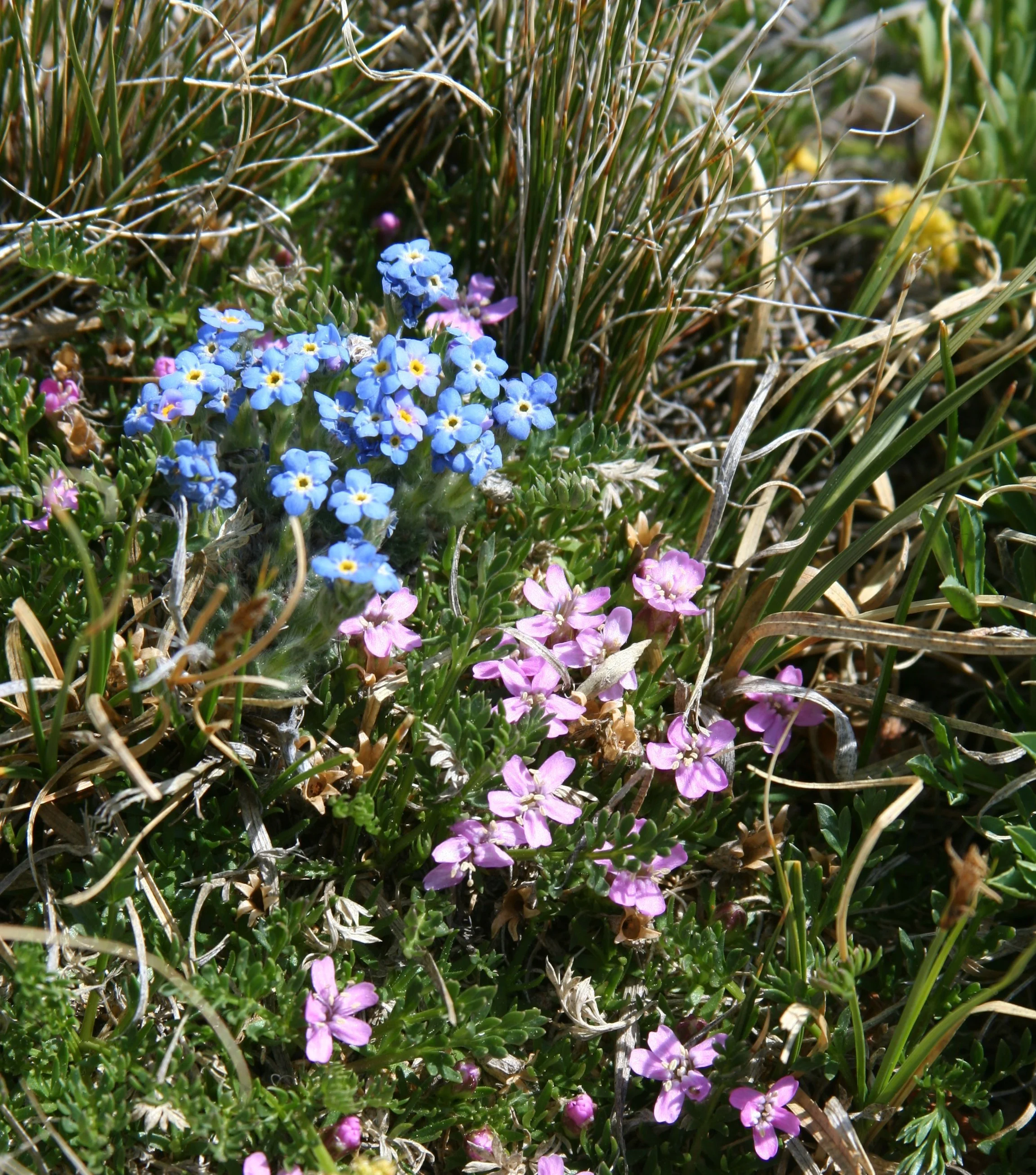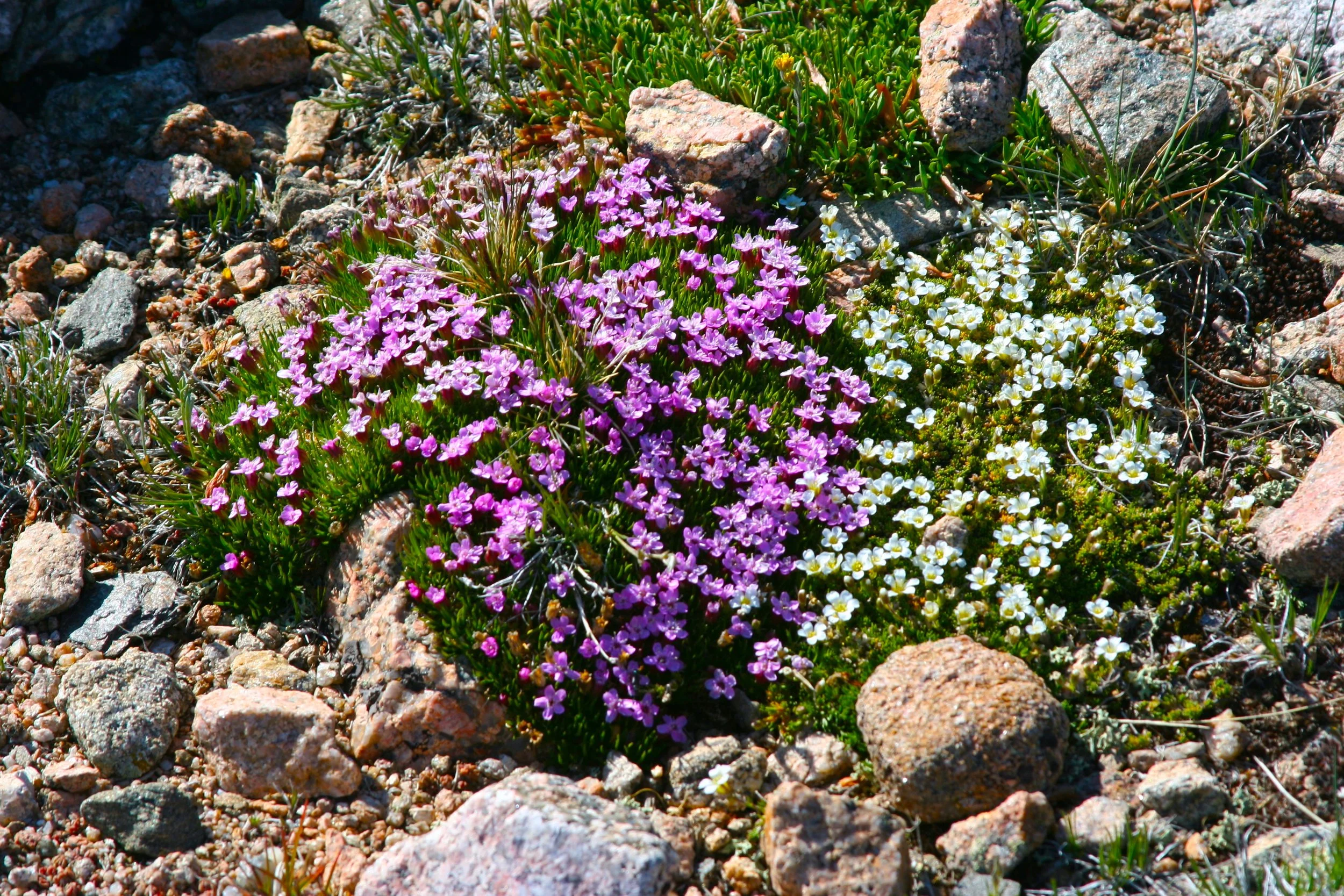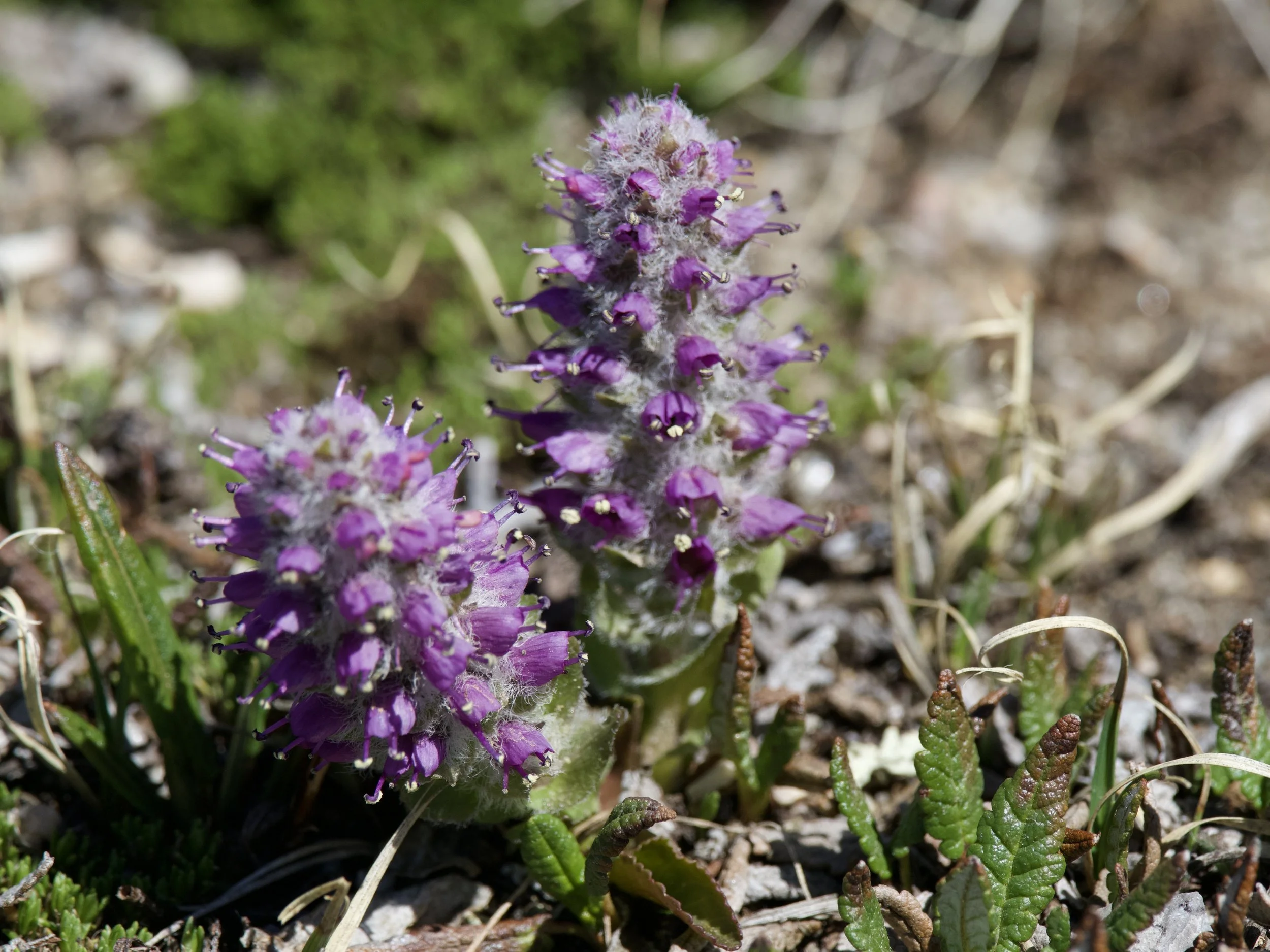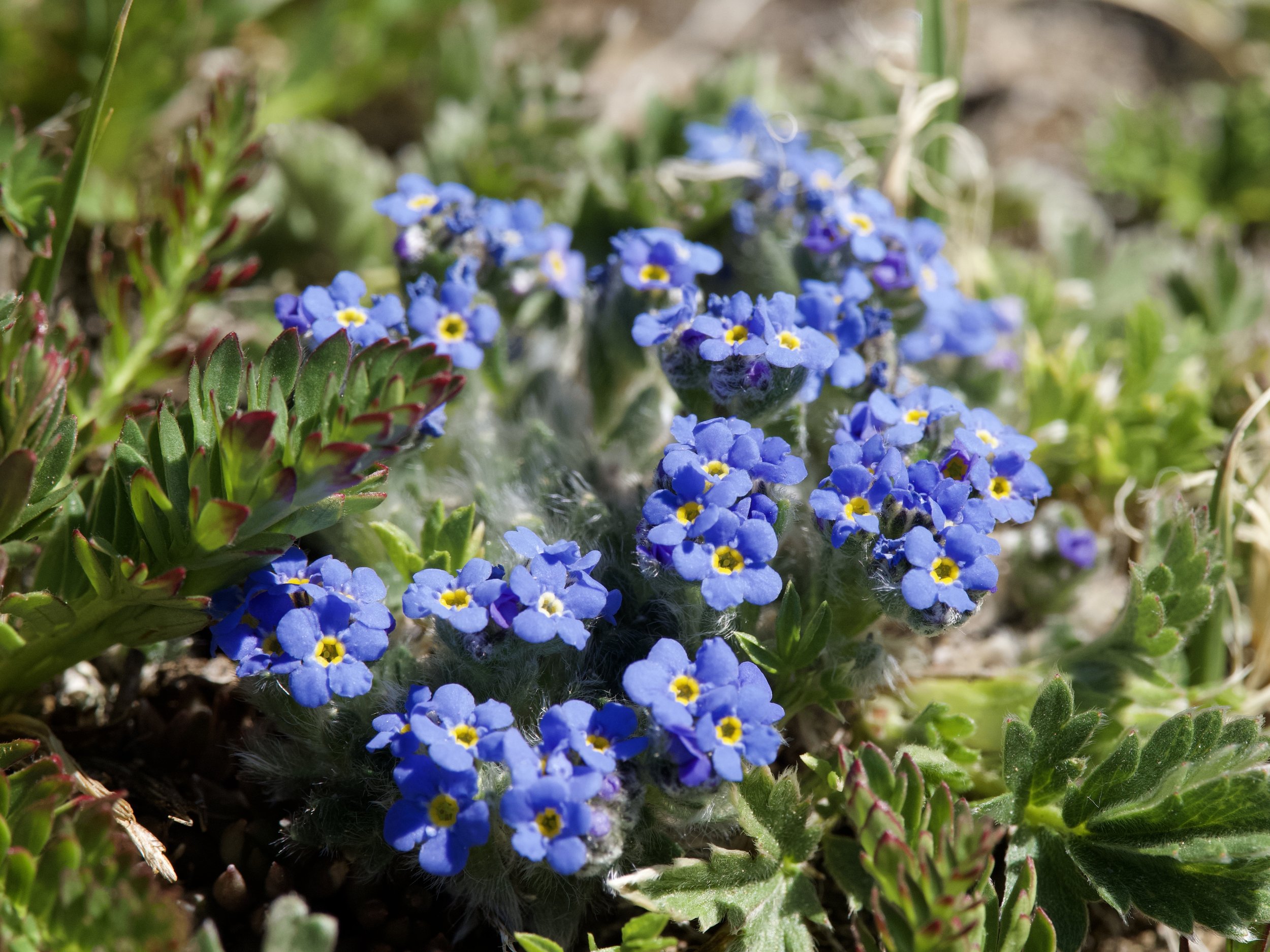June Nature Almanac: What’s Up on the Tundra?
By Ruth Carol Cushman with Stephen R. Jones and Scott Severs
June 2023
It’s a paradox that forget-me-nots, moss campions, and other alpine flowers usually bloom in June while snowdrifts still cover marsh marigolds and globeflowers in the spruce-fir forest at lower elevations.
Forget-me-not (Eritrichium nanum), moss campion (Silene acaulis), and mountain parsley (Cymopterus sp.) growing together. Photo by Glenn Cushman.
Although this year’s bountiful snowfall may delay June’s flowering, the moisture should make for a spectacular show by month’s end. Many plants on the alpine tundra will continue to flower into July, but by then it may be too late to see forget-me-nots.
The flat areas where gravel, stones, and soil intermingle above treeline are called fellfields. Fell is Old Norse for stone, and these stony fields are where wild gardens flourish in soil recently (geologically speaking) ground down from boulders.
Moss campion (Silene acaulis)and sandwort (Arenaria lanuginosa) nestle together in a fellfield. Photo by Glenn Cushman.
Cushion plants, such as moss campion, are among the first tufts to colonize this wind-scoured grit. They put down deep taproots to absorb moisture and to anchor them to the ground when blizzards blow. Spring snows provide moisture to the bare soil but melt early allowing fellfield plants to bloom while nearby plants have yet to bud.
Mat plants, such as sandwort, are similar to cushion plants but are looser, larger, and can take root wherever their spreading branches touch ground.
Still other plants, such as big-rooted spring beauties, form rosettes, permitting maximum exposure to light and minimum exposure to the elements. These aptly named flowers, about two inches wide, have roots up to 15 feet long and are often found in rock crevices.
Big-rooted Spring Beauty (Claytonia megarhiza, aka Alpine Spring beauty) growing in a crack between rocks. Photo by Glenn Cushman.
In Land Above the Trees, Ann Zwinger and Betty Willard wrote that the landscape is “almost as two-dimensional as a patchwork quilt.” But if you lie on your belly, eye level with these elfin plants, you discover a complex, multi-level world. What looks superficially like moss is actually a fully formed vascular plant.
Alpine kittentails (Besseya alpina) add to the vertical dimension of the alpine tundra patchwork quilt. Photo by Scott Severs.
In addition to fellfields, the tundra contains other distinct communities, each with a characteristic mix of plants and animals that evolved clever adaptations to survive. By growing low to the ground alpine plants conserve moisture and escape the shearing effect of wind. Almost all alpine plants are perennials, saving time and energy by not starting from scratch each season. Other plant adaptations include the stonecrop’s fleshy, succulent leaves that retain moisture, and the fuzzy hairs of paintbrushes that protect the plant from dehydration and hold in heat like a greenhouse.
Fuzzy hairs (technically, trichomes) help reduce dehydration in alpine plants like this alpine forget-me-not (Eritrichium nanum). Photo by Scott Severs.
Tundra plants look dainty and delicate, but if not disturbed or severely trampled, may live for centuries. They form a mosaic of colors, shapes, textures, and smells that bring flower lovers to their knees. However, off-road vehicles, off-trail bikers, and careless hikers can cause irreparable damage. A road blasted across the tundra can destroy soil and plant communities that took centuries to develop. And what will global warming do? When a plant or a pika is already at the top of the mountain, where else can it go?
But fears for the future can be temporarily put aside in late June when forget-me-nots bloom. Take a hand lens and head to that land above the trees -- Pawnee Pass, Arapaho Pass, Niwot Ridge, Mount Audubon, James Peak and more -- to discover the wonder of fellfields and other alpine communities.
Other June Events
Large numbers of Red Crossbills, birds usually associated with the spruce-fir forest, have been reported coming to feeders. Other feeder watchers are reporting a change in goldfinch behavior. Both American and Lesser Goldfinches appear to be eschewing thistle seeds (their old favorite) and going for sunflower seed instead.
Woodhouse’s toads and chorus frogs sound off in low-elevation wetlands where you may also see and hear Bobolinks and Wilson Snipe.
Fireflies flash their “come hither” lights at Sawhill Ponds and the meadows near the Cherryvale Trailhead from late June to early July, usually starting around 9 p.m.
Penstemons, locoweeds, mariposa lilies, Rocky Mountain iris, sugar bowls, and orange arnica add splashes of color to meadows and trails. Hike Skunk Canyon, Bear Canyon, or Shanahan Ridge for spectacular floral displays.
Recently-arrived monarch butterflies lay eggs on milkweed plants within the South Boulder Creek and Boulder Tallgrass Prairie state natural areas and at Sawhill and Walden Ponds. Stop to sniff the fragrant, gorgeous flowers of the showy milkweed Asclepias speciosa!





